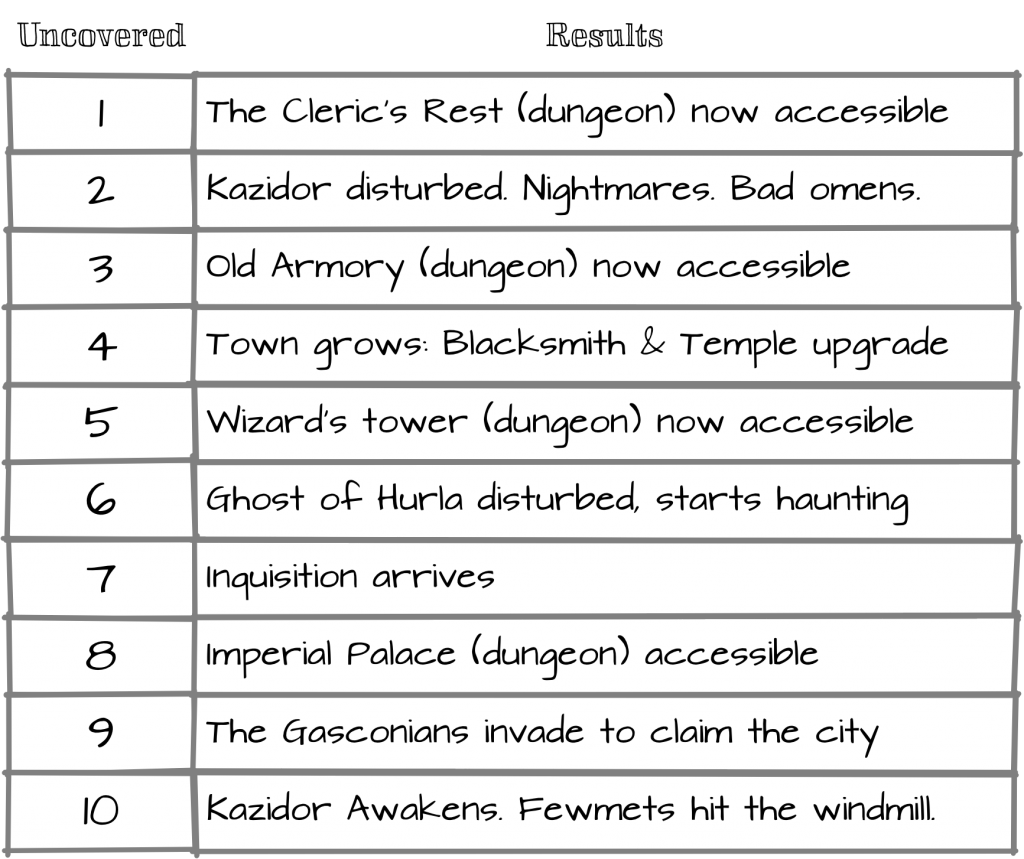 This was an unplanned tweetstorm this morning, but it’s practical enough that it’s worth turning into a proper post.
This was an unplanned tweetstorm this morning, but it’s practical enough that it’s worth turning into a proper post.
TL;DR – when you narrate in blades, include all the information that the characters would have gotten if they’d asked all the smart questions and done all the smart research. We are playing to see what they do with that information, not to watch them flail around finding it.
When you’re running (or playing) Blades in the Dark, narration should come from a place of knowledge.
That is simple, but maybe not obvious, so let me unpack what that means. In most games you will use descriptive narration, telling players what they see and sense. If they want further information, they can take action as characters (investigate, poking around) or ask questions as players. This back and forth is part of how players engage a situation, and for many games this is fine.
Blades is a bit different in two ways. First, it is very rare that the question is whether the crew will succeed, and is instead about how they will succeed (and what may happen as a result). Second, the flashback mechanism offers entirely different ways to engage these scenes. These differences call for a difference in approach – specifically, they reward giving more information when narrating.
So, rather than provide a purely descriptive narration, consider an informed narration – one that expands upon the description with context and information, as if the listener were well informed on the topic. See, in Blades – on a job in particular – the assumption is that characters have done their due diligence and legwork, so when an element is introduced, the narrator can reflect that with an “as you know, Bob…”, albeit cooler.
So, for example, if my crew were to come upon a door in a classic game, I might say:
The door is imposing and conveys a clear message of “no”. Heavy black wood, thick bronze bands and an ornate, sophisticated lock all make it cleat that this door is not interested in letting you past.
And that’s fine, so far as it goes. They can start digging in. But for blades, I would start with that and add something like:
The wood is treated ironwood: fireproof and hard enough to dull anything but specialized tools, imported from the south at significant expense. The lock’s a Wilson and Finch 9 tumbler job with an etheric snap back mechanism which has three keys, one held by the mark, one by his chief of security and one in the W&F offices.
Now, I’m giving two kinds of information here. Some of this is information that could be sussed out by asking questions (or, depending on the game, maybe making knowledge rolls), and providing that without the players asking serves a couple purposes, but most critically it shows the players and their characters a degree of respect and circumvents the possibility that they might ask the “wrong” questions. That kind of generosity is useful in many games.
The other kind of information is contextual. Where the wood comes from, what the status of the keys are and details about the lock are things that could not be determined within the scene, so providing them seems counterintuitive to the usual RPG model – it might even feel overly narrative or storytelling-ish. However, it’s much less grandiose than that – it is a way to reflect the legwork that the characters did offscreen without forcing them to keep extensive notes. Just assuming the know this stuff is both practical and respectful.
But that’s not all – this also very explicitly provides hooks for flashbacks. As narrator, I am communicating several possible elements that might inspire players to hang a flashback off. Now, players are creative, and they may not need these hooks, or they may ignore the hooks I offer entirely in favor of their own, and that’s fine, but by offering them I prime the pump.
Not only does this make life easier for my players, it makes life easier for me. When I don’t have time to think up a really interesting job, or when the circumstances surrounding a job dictate that it’s probably short and simple, a few richly narrated details can unspool into a lot of very satisfying play by moving play into the flashbacks. The job itself could be quite short, but the play experience very satisfying if enough engagement happens in the flashbacks.
If you’re looking for tips on how to do this, look to the source fiction. Capers and espionage stories, especially movies and TV, are awash with well-informed narrators. This might take the form of a mission briefing voiceover while the action is taking place, or it might take the form of editorial observations from the protagonist. I’m a huge fan of Burn Notice which is a great example of the latter type. Find a voice and style you like, and think about how a scene would be described in that context.
Now, none of this is obligatory. Blades runs just fine if you do it straight, so this is not something to stress about. But it’s a powerful tool in your toolbox, and I definitely encourage trying it out.
Sidebar: All this is for players too. If your GM doesn’t give you hooks to hang flashbacks on, then that is an invitation to create them. This doesn’t require a full narration or story, just your own little bit of Burn Notice voiceover and you’re off to the races!
